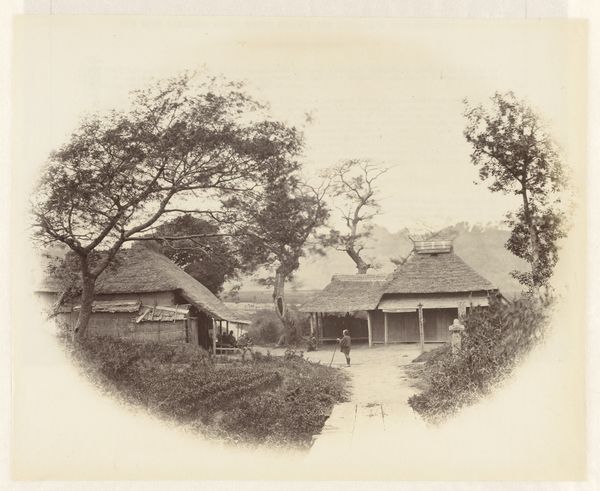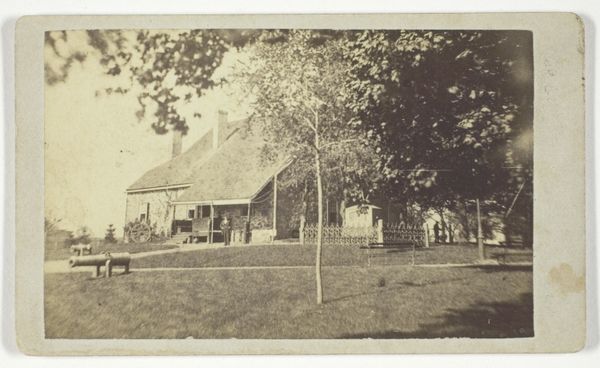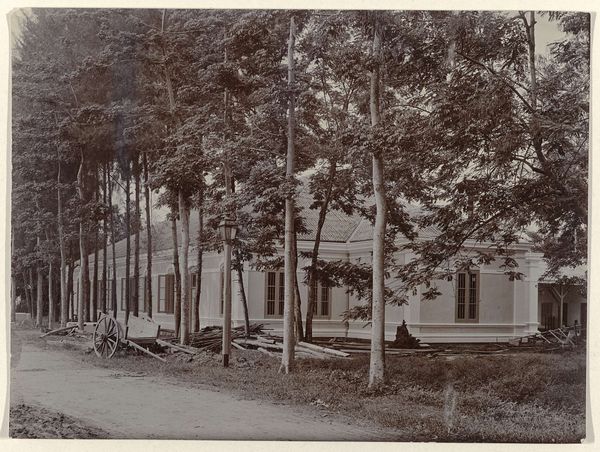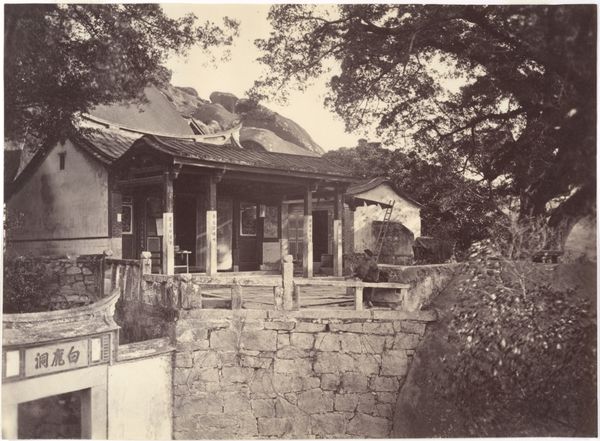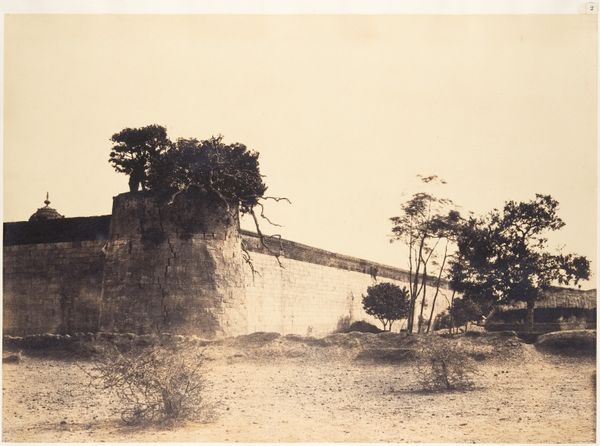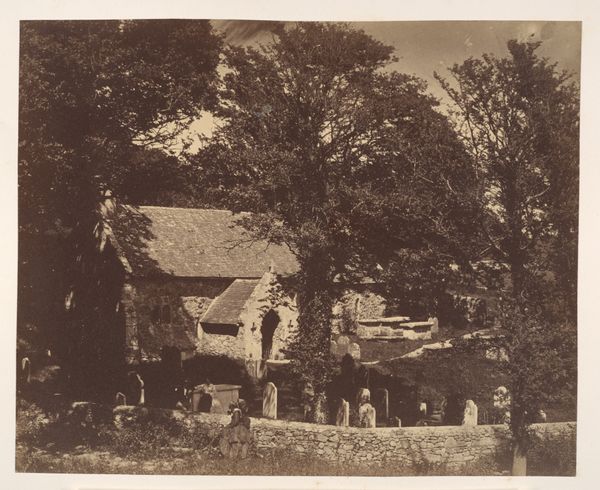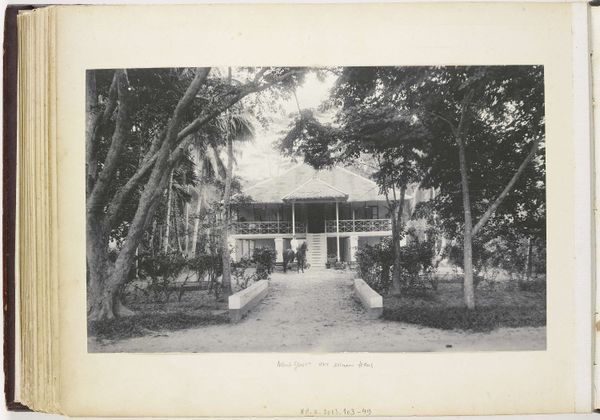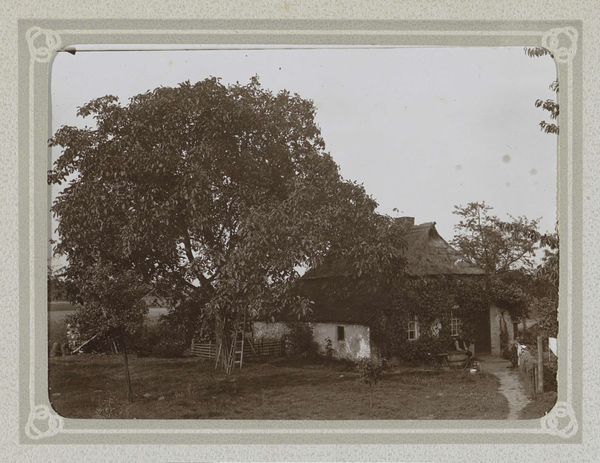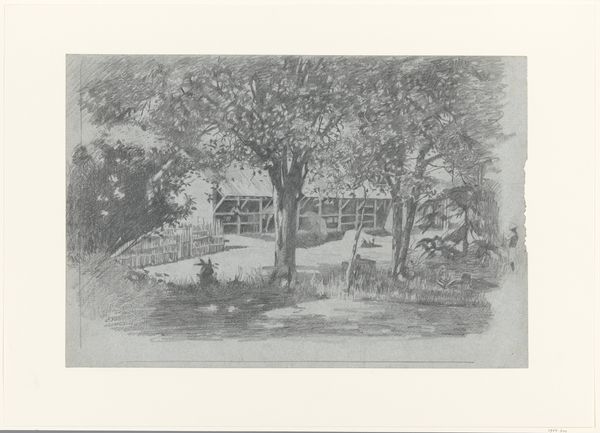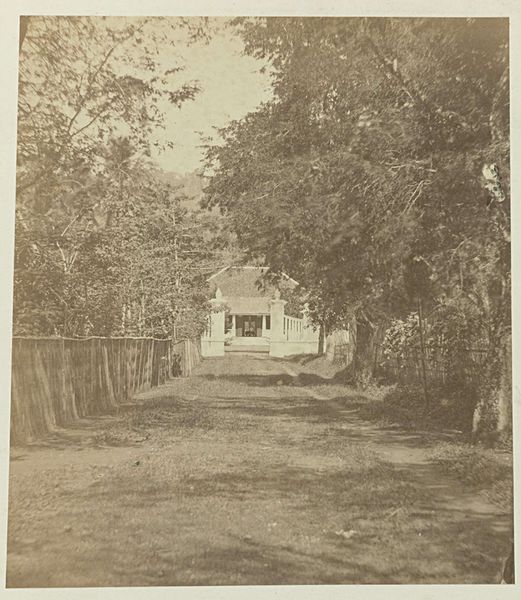
print, photography
#
print photography
#
16_19th-century
# print
#
asian-art
#
landscape
#
agricultural
#
photography
#
orientalism
Dimensions: 23.4 × 29.3 cm (image); 34.3 × 47.2 cm (album page)
Copyright: Public Domain
Editor: So, this is John Thomson’s "A Pepohoan Dwelling," taken around 1868. It’s a fascinating print photograph. The texture of the woven walls and the thatched roof are really striking, almost tactile. What do you make of the visible means of construction depicted here? Curator: Well, the rough-hewn timber, the locally sourced thatching, the very *making* of this dwelling—it speaks volumes about the community’s relationship to its environment and its economy. Consider the labor involved. Who built this? How did the materials shape the structure and, by extension, the lives within? Editor: It looks like they built it from materials that are accessible around the dwelling and affordable. Does that simplicity reinforce or challenge traditional distinctions between art and craft? Curator: Precisely. Thomson, a Western photographer, is capturing, and arguably exoticizing, an image of "native" life. But consider the agency inherent in the construction of this home. This dwelling is a product of skill, available materials, and communal effort, blurring those lines. Are we looking at "art," or are we observing vernacular architecture elevated by the act of documentation? Editor: I guess the Orientalism style invites that external gaze and complicates the appreciation of the labor and resourcefulness on display. Are we meant to marvel at the dwelling, or ponder the socio-economic realities that shaped it? Curator: Thomson’s lens shapes our perception, but the materiality of the dwelling demands our attention. What can the structure itself reveal about the Pepohoan people's social organization, their agricultural practices, and even their beliefs? The baskets, the placement of the home... these all have meaning. Editor: That’s true; thinking about it from a material perspective really reframes the way I see the photo. The photograph is more than an image: it’s evidence of a process and an interaction between people and place. Curator: Indeed, and it reminds us to look beyond the aesthetic to the tangible conditions that give rise to art and life itself.
Comments
No comments
Be the first to comment and join the conversation on the ultimate creative platform.
